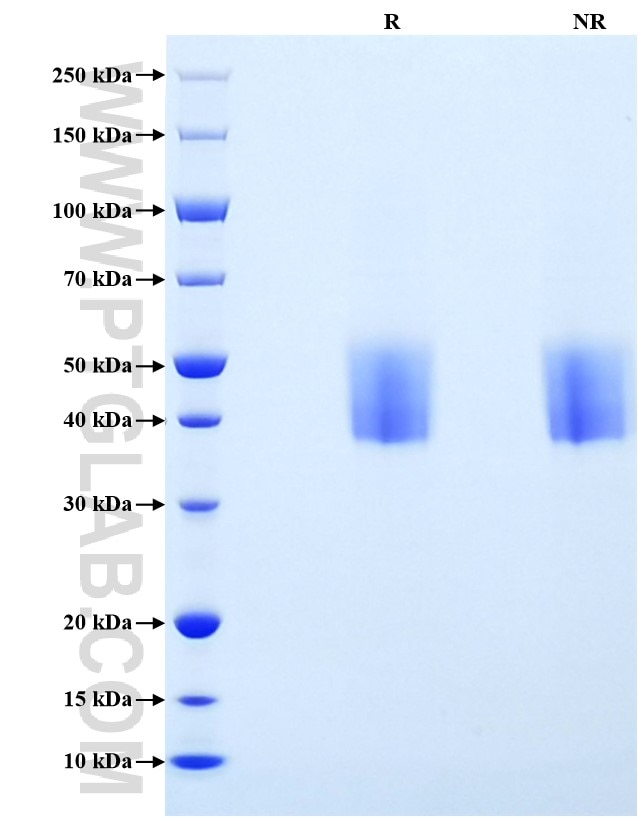Recombinant Human CD200 protein (Myc Tag, His Tag)
Species
Human
Purity
>90 %, SDS-PAGE
Tag
Myc Tag, His Tag
Activity
not tested
Cat no : Eg0006
Validation Data Gallery
Product Information
| Purity | >90 %, SDS-PAGE |
| Endotoxin | <0.1 EU/μg protein, LAL method |
| Activity |
Not tested |
| Expression | HEK293-derived Human CD200 protein Gln31-Gly232 (Accession# P41217-1) with a Myc tag and a His tag at the C-terminus. |
| GeneID | 4345 |
| Accession | P41217-1 |
| PredictedSize | 27.7 kDa |
| SDS-PAGE | 38-52 kDa, reducing (R) conditions |
| Formulation | Lyophilized from 0.22 μm filtered solution in PBS, pH 7.4. Normally 5% trehalose and 5% mannitol are added as protectants before lyophilization. |
| Reconstitution | Briefly centrifuge the tube before opening. Reconstitute at 0.1-0.5 mg/mL in sterile water. |
| Storage Conditions |
It is recommended that the protein be aliquoted for optimal storage. Avoid repeated freeze-thaw cycles.
|
| Shipping | The product is shipped at ambient temperature. Upon receipt, store it immediately at the recommended temperature. |
Background
CD200, also known as OX2, is a type I transmembrane glycoprotein that belongs to the immunoglobulin superfamily. It contains two extracellular immunoglobulin domains, a transmembrane and a cytoplasmic domain. CD200 is expressed on a variety of cell types, including thymocytes, B lymphocytes, a subset of T lymphocytes, follicular dendritic cells, neurons, and endothelial cells. CD200 binds to its receptor, CD200R, which is primarily expressed by myeloid and T cell lineage. The CD200-CD200R interaction plays a role in immunosuppression and suppression of anti-tumor immune responses.
References:
1. G W McCaughan, et al. (1987) Immunogenetics. 25(5):329-35. 2. G J Wright, et al. (2000) Immunity. 13(2):233-42. 3. Reginald Gorczynski, et al. (2004) J Immunol. 172(12):7744-9. 4. T P Rygiel, et al. (2012) Oncogene. 31(24):2979-88.

